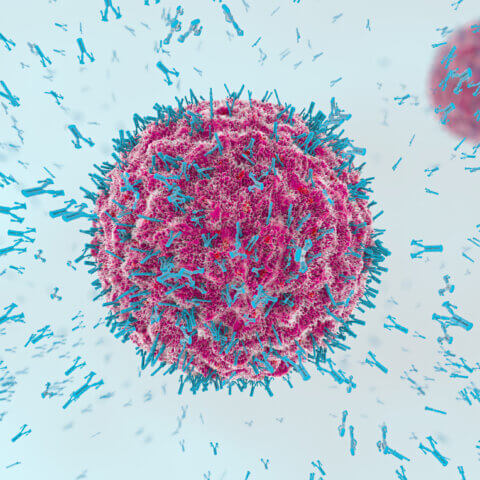Last Updated: January 10, 2024, 3 pm UTC
The pre-IND meeting is an opportunity for highly productive interactions between sponsors and the FDA, allowing for discussion of key material attributes and development strategy plus requests for Agency review and advice on specific topics. In general, such meetings are multidisciplinary and cover the regulatory, Chemistry, Manufacturing, and Controls (CMC), nonclinical, and clinical plans for a development program. Premier Consulting’s CMC regulatory strategists are often asked how a sponsor should address potential CMC questions during a pre-IND meeting. In this blog, we share valuable insights and considerations for conducting an optimal assessment in preparation of such meetings from the CMC perspective.
What Goes Into a Pre-IND Meeting?
The pre-IND meeting should be approached holistically, focusing on the development strategy, the non-clinical and clinical studies being proposed, and the CMC plans and data that are needed to support these plans. At the pre-IND stage, the CMC plan may not be fully developed. Key to the IND opening studies is that the CMC information is sufficient to support the safety of the drug substance and drug product and establish the phase-appropriate quality of the drug product. This will allow for initial evaluation and/or monitoring of the safety of the product. The core of this CMC information includes the proposed drug substance dossier, dosage form, dosage strengths, manufacturing process, and quality control strategy.
Drug Substance Considerations
Since the key consideration at IND opening phase is safety, continuity of the drug substance quality is key as Sponsors transition from nonclinical to clinical studies. Demonstrating that the drug substance used in nonclinical batches that establishes the baseline safety is equivalent to the material intended for clinical batches is a critical component. If any quality differences are expected, a pre-IND meeting can confirm the adequacy of the plan to demonstrate the equivalence of the drug substance batches.
Other safety considerations for the drug substance include potential impurities, such as process impurities and degradants. Although the Agency does not expect characterization of the full impurity profile at the pre-IND stage, a rudimentary understanding of impurity formation, such as that provided during forced degradation studies, is valuable. More importantly, the development of scientifically justified analytical methods and in-process controls can demonstrate impurity control sufficient for IND opening. The test methods need not be provided in the pre-IND meeting documentation; rather, it suffices to have a strategy in place to account for these drug substance-related impurities. Other potential impurities of concern include nitrosamines, residual solvents, and elemental impurities – these could arise from the drug substance or excipients or as a result of the drug product manufacturing process and should be controlled appropriately.
Also, control of the solid form of the drug substance could affect the solubility, stability, and bioavailability of the molecule. Thus, it is critical to include these parameters in the development plan and discuss the plan at the pre-IND meeting.
Drug Product Considerations
For the drug product, start by examining the formulation and the manufacturing process. It is recommended that the formulation excipients be listed in the FDA Inactive Ingredient Database (IID) and used at or below IID levels for the intended route of administration. The manufacturing process and excipients should preferably not change the physical form of the drug substance unless intended as part of the development. An unintended change in the form of the drug substance may affect drug product quality attributes and should be addressed at the pre-IND meeting. If an excipient is not listed in the IID or is present in levels exceeding the IID, justification of the use level is required and may involve non-clinical subject matter experts. The justification is suitable for discussion at the pre-IND meeting. For the drug product, the critical review items during the IND review revolve around the dose uniformity, stability, and the amount of active pharmaceutical ingredient (API) released from the dosage form. Control of these parameters can be discussed at the pre-IND meeting.
What About Combination Products?
If the drug product is part of a drug-device combination, considerations for the drug component of the combination will be the same as those presented above. However, additional considerations for the device component must be evaluated; issues thus identified are suitable for pre-IND discussion.
As with the drug product component, demonstration of the safety of the device is the key ask in early development. Biocompatibility studies demonstrating that the device is safe for the intended use must be established. The impact of the device on the drug product quality attributes and safety are suitable issues for discussion in the pre-IND meeting.
Conclusion
The goals of a pre-IND meeting always include minimizing regulatory and execution risks in a drug development program through well-defined clinical, clinical pharmacology, nonclinical, and CMC development plans. In the steps leading up to a pre-IND meeting, the physicochemical properties of the API used in nonclinical studies should be comparable to those intended for clinical studies. Also, critical drug product attributes required for supporting safety and quality for clinical study use should be identified. These attributes are often captured in a quality target product profile (QTPP). All issues and potential issues arising from such critical CMC considerations are suitable for inclusion and discussion in a pre-IND meeting.
The CMC professionals at Premier Consulting have the expertise to develop and review pre-IND information and support all aspects of the pre-IND meeting process, including writing and reviewing the meeting request and briefing package as well as attending the meeting and performing required follow-up steps. Contact us to learn more.

 Webinar
Webinar 


 Perspectives Blog
Perspectives Blog 